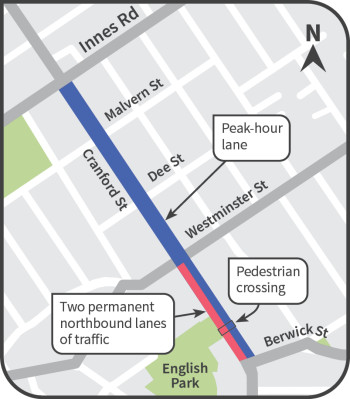
At its meeting on Thursday, the Waipapa Papanui-Innes-Central Community Board considered three options proposed for the peak-hour lanes between Berwick St and Innes Rd following 15 submission deputations.
The implementation of the bus lane, including upgrades, is estimated to cost $250,000.
There were 632 submissions on the proposal, with 42 per cent supporting the bus lane, 48 per cent supporting a clearway, and 10 per cent wanting a T2 lane option for high-occupancy vehicles.
As the board voted in favour of a peak-hour bus lane, the decision now sits with city councillors who will consider the board’s recommendation in December.
The changes are expected to be implemented in early 2025.
Board chairperson Emma Norrish said: "It’s good for the local St Albans community to be a step closer to having a permanent layout for this section of Cranford St.
"The opening of the Christchurch Northern Corridor was always going to have big implications for this community, and it has been good to go through this process of hearing the feedback of all the submitters.”
The work will be funded by the council through its Downstream Effects Mitigation Plan.

The lanes revert to on-street parking with more space for cyclists outside of these times.
At its meeting, the board also made a decision on the 300m section of northbound lane between Berwick and Westminster Sts, originally proposed as a peak-hour clearway across all options.
The board approved a staff recommendation to instead create two permanent northbound lanes.
This means traffic won’t need to merge after the English Park pedestrian crossing outside of peak times, reducing driver distraction and improving safety and efficiency.












